Biden honors victims of Tulsa race massacre on 100th anniversary, PBS News, NBC News, CBS News, VOX, Tulsa Public Schools, HISTORY News and AP News
PBS News: Biden honors victims of Tulsa race massacre on 100th anniversary, 6.01,2021
PBS NewsHour full episode, May 31 & June 1, 2021
PBS News: How art is retelling powerful stories of Tulsa massacre, capturing community’s hopes, May 28, 2021
Washington Week PBS: America Faces Its History of Race Violence, May 28, 2021
NBC Nightly News Broadcast (Full) – May 31st, 2021
NBC News: Meet The Press Broadcast (Full) – May 30th, 2021
CBS News: “Tulsa 1921: An American Tragedy”
VOX: The massacre of Tulsa’s “Black Wall Street”
Tulsa Public Schools: The Tulsa Race Massacre; Then and now
HISTORY News: ‘Black Wall Street’ Before, During and After the Tulsa Race Massacre – PHOTOS
AP News: Hundreds gather at historic Tulsa church’s prayer wall
WATCH LIVE: Biden honors victims of Tulsa race massacre on 100th anniversary
Streamed live 5 hours ago, 6.01,2021 PBS NewsHour
Stream your PBS favorites with the PBS app: https://to.pbs.org/2Jb8twG Find more from PBS NewsHour at https://www.pbs.org/newshour Subscribe to our YouTube channel: https://bit.ly/2HfsCD6 Follow us: Facebook: http://www.pbs.org/newshour Twitter: http://www.twitter.com/newshour Instagram: http://www.instagram.com/newshour
PBS NewsHour full episode, June 1, 2021
Fundraiser
Jun 1, 2021 PBS NewsHour
Support your local PBS station here: https://pbs.org/donate Tuesday on the NewsHour, the anniversary of the Tulsa massacre renews calls to address the massive and widening racial wealth gap in the U.S. Then, Latin America sees huge spikes in COVID cases across the region after an explosion of cases in Brazil. And, questions arise about applications and tuition for community colleges amid a precipitous drop in enrollment, especially among students of color. WATCH TODAY’S SEGMENTS News Wrap: JBS meat plants downed globally after cyberattack https://www.youtube.com/watch?v=KXB-7… Biden makes history with Tulsa visit https://www.youtube.com/watch?v=lAP0k… What would reparations for Black Americans look like? https://www.youtube.com/watch?v=Xv2im… COVID is driving political, economic crises in Latin America https://www.youtube.com/watch?v=Cv4t0… How community colleges are retooling to raise enrollment https://www.youtube.com/watch?v=uujC1… The ‘enormous’ pressures of professional sports https://www.youtube.com/watch?v=2DiBS… Adichie on being unprepared for the ‘pain of absence’ https://www.youtube.com/watch?v=-kPkC… Cleveland barbershop offers haircut, and a COVID-19 vaccine https://www.youtube.com/watch?v=h4BZY… Stream your PBS favorites with the PBS app: https://to.pbs.org/2Jb8twG Find more from PBS NewsHour at https://www.pbs.org/newshour Subscribe to our YouTube channel: https://bit.ly/2HfsCD6
PBS NewsHour live episode, May 31, 2021
May 31, 2021 PBS NewsHour
Monday on the NewsHour, honoring those who gave all for our country, while celebrating the chance to gather once again for Memorial Day. Then, looking at the painful past and how the racial terror of the Tulsa massacre still resonates 100 years later. And, a new museum strives to remember — but not glorify —the toll of war. WATCH TODAY’S SEGMENTS As COVID restrictions ease, here’s how the country marked Memorial Day https://youtu.be/NcLPVfETSaQ News Wrap: Miami Manhunt for 3 banquet hall shooters continues https://youtu.be/Tw1rsNVXrCI How a racist white mob ruined ‘Black Wall Street’ 100 years ago https://youtu.be/3kmRc1OX284 Tulsa’s Black community still waiting for ‘atonement, repair and respect’ https://youtu.be/lCq0iZJKW9w Why this Indianapolis school district will keep remote learning on the table this fall https://youtu.be/kKbtibd0Mh8 Amy Walter and Errin Haines on Texas voting law, filibuster rules, Biden agenda https://youtu.be/AEgjJ-EndZw The dangers of reporting from Russia during the Cold War https://youtu.be/F-s50VxLa4I Massachusetts museum tells the hulking history of wars https://youtu.be/N5hJympHVfU Stream your PBS favorites with the PBS app: https://to.pbs.org/2Jb8twG Find more from PBS NewsHour at https://www.pbs.org/newshour Subscribe to our YouTube channel: https://bit.ly/2HfsCD6 Follow us:
How art is retelling powerful stories of Tulsa massacre, capturing community’s hopes
May 28, 2021 PBS NewsHour
100 years ago Monday, a white mob descended on a Black neighborhood of Tulsa, Oklahoma, killing people and burning homes and businesses. The Tulsa massacre, as it came to be known, is being remembered in many ways — one of them, an art and history project known as the Greenwood Art Project. Jeffrey Brown has our report for our arts and culture series, CANVAS. Stream your PBS favorites with the PBS app: https://to.pbs.org/2Jb8twG Find more from PBS NewsHour at https://www.pbs.org/newshour Subscribe to our YouTube channel: https://bit.ly/2HfsCD6
America Faces Its History of Race Violence | Washington Week | May 28, 2021
May 28, 2021 Washington Week PBS
Next week marks the 100-year anniversary of the Tulsa Race Massacre that ravaged a community known as “Black Wall Street.” The panel also discussed the 1917 East St. Louis Massacre, the gaps in our education, & what the major political and culture changes seen in the country over the past year. Panel: Trymaine Lee of MSNBC, Wesley Lowery of 60 Minutes+, Ayesha Rascoe of NPR, Sara Sidner of CNN Watch the latest full show and Extra here: https://pbs.org/washingtonweek Subscribe to our YouTube channel: https://bit.ly/2ZEPJNs Follow us on Twitter: https://twitter.com/washingtonweek Like us on Facebook: https://www.facebook.com/washingtonweek
https://www.youtube.com/watch?v=f1tJ9z7yR60
NBC Nightly News Broadcast (Full) – May 31st, 2021
May 31, 2021 NBC News
New TSA record set as millions travel over holiday weekend, controversial Texas voting law temporarily derailed, and new video released in Miami mass shooting. Watch “NBC Nightly News With Lester Holt” at 6:30 p.m. ET / 5:30 p.m. CT (or check your local listings). 00:00 Intro 01:42 Holiday Travel 04:36 Texas Voting Battle 06:24 Miami Mass Shooting Manhunt 08:25 Tulsa Confront Trauma Of Massacre 10:55 Dangerous Drought 13:39 Theaters Reopen 15:05 Wedding Prices Surge 16:49 Memorial Day: Honoring Those Who Served » Subscribe to NBC News: http://nbcnews.to/SubscribeToNBC » Watch more NBC video: http://bit.ly/MoreNBCNews
Meet The Press Broadcast (Full) – May 30th, 2021
May 30, 2021 NBC News
Former Rep. Barbara Comstock and Rep. Jason Crow (D-Colo.) discuss the failure to form a bipartisan Jan. 6 commission. Matthew Pottinger and Dr. Peter Hotez explain why the Covid-19 lab leak theory is gaining legitimacy from the Biden administration. Geoff Bennett, Stephanie Cutter, Sara Fagen and Ayesha Rascoe join the Meet the Press roundtable.» Subscribe to NBC News: http://nbcnews.to/SubscribeToNBC » Watch more NBC video: http://bit.ly/MoreNBCNews NBC News Digital is a collection of innovative and powerful news brands that deliver compelling, diverse and engaging news stories. NBC News Digital features NBCNews.com, MSNBC.com, TODAY.com, Nightly News, Meet the Press, Dateline, and the existing apps and digital extensions of these respective properties. We deliver the best in breaking news, live video coverage, original journalism and segments from your favorite NBC News Shows.
“Tulsa 1921: An American Tragedy”
Jun 2, 2021
It’s been 100 years since the Tulsa Race Massacre, a two-day attack on Black Americans in the thriving business district of Greenwood. Hear from survivors, descendants of victims and thought leaders in the CBS News special, “Tulsa 1921: An American Tragedy,” anchored by “CBS This Morning” co-host Gayle King.
Rosewood 1923 an American tragedy, Clinton massacre 1875 an American tragedy, Ocoee massacre 1920 an American tragedy, Atlanta 1906 an American tragedy Chicago 1919 an American tragedy, New Orleans 1866 an American tragedy…. There many, many more American tragedies!
VOX: The massacre of Tulsa’s “Black Wall Street”
Feb 27, 2019
White mobs destroyed “Black Wall Street” in 1921. But where are the victims’ bodies? Help our reporting on hidden histories. Submit a story idea here: http://bit.ly/2RhjxMy 100 years ago, a white mob destroyed an American neighborhood called “Black Wall Street,” murdering an estimated 300 people in Tulsa, Oklahoma. That incident — known as the 1921 Tulsa Race Massacre — has been largely left out of US history books. Today, a century later, the city still has a lot of questions. For one, where are the bodies of the victims? As the city’s mayor re-opens the search for mass graves, we take a look at what happened back in 1921…and why finding these graves still matters to the people of Tulsa. For more reading, check out the links below: Vox’s reporting on an eyewitness account of the horrific attack: https://www.vox.com/2016/6/1/11827994… The Washington Post’s in-depth story on the massacre and the current challenges of gentrification: https://www.washingtonpost.com/news/l… And to take a look through more digitized photos, audio, and documents from 1921, check out the Tulsa Historical Society’s collection: https://www.tulsahistory.org/exhibit/… Sign up for the Missing Chapter newsletter to stay up to date with the series: https://vox.com/missing-chapter Have an idea for a story that Ranjani should investigate for Missing Chapter? Send it to her via this form! http://bit.ly/2RhjxMy? Vox.com is a news website that helps you cut through the noise and understand what’s really driving the events in the headlines. Check out http://www.vox.com. Watch our full video catalog: http://goo.gl/IZONyE Follow Vox on Facebook: http://goo.gl/U2g06o Or Twitter: http://goo.gl/XFrZ5H
The Tulsa Race Massacre; Then and now
Jun 1, 2018
UPDATED April 2021: For a new video series, lesson plans, and more resources about the 1921 Tulsa Race Massacre, continue the journey here: www.tulsaschools.org/tulsaracemassacre
Oklahoma Historical Society/Getty Images
HISTORY News: ‘Black Wall Street’ Before, During and After the Tulsa Race Massacre – PHOTOS
At the turn of the 20th century, African Americans founded and developed the Greenwood district in Tulsa, Oklahoma. Built on what had formerly been Indian Territory, the community grew and flourished as a Black economic and cultural mecca—until May 31, 1921.
That’s when a white mob began a rampage through some 35 square blocks, decimating the community known proudly as “Black Wall Street.” Armed rioters, many deputized by local police, looted and burned down businesses, homes, schools, churches, a hospital, hotel, public library, newspaper offices and more. While the official death toll of the Tulsa race massacre was 36, historians estimate it may have been as high as 300. As many as 10,000 people were left homeless.
The incident stands as one most horrific acts of racial violence, and domestic terrorism, ever committed on American soil.
WATCH: The full episode of Tulsa Burning: The 1921 Race Massacre online now.
In May 2021, 100 years after the massacre, 107-year-old Viola Fletcher testified before Congress: “On May 31, of ‘21, I went to bed in my family’s home in Greenwood,” she recounted. “The neighborhood I fell asleep in that night was rich, not just in terms of wealth, but in culture…and heritage. My family had a beautiful home. We had great neighbors. I had friends to play with. I felt safe. I had everything a child could need. I had a bright future.”
Then, she said, came the murderous rampage, still vivid in her mind 100 years later: “I still see Black men being shot, Black bodies lying in the street. I still smell smoke and see fire. I still see Black businesses being burned. I still hear airplanes flying overhead. I hear the screams.”
Below, a selection of photos that show Greenwood before, during and after the tragedy:
Collection of the Smithsonian National Museum of African American History and Culture, Gift of the Families of Anita Williams Christopher and David Owen Williams
North Greenwood Avenue in Tulsa (above), prior to the 1921 Tulsa race massacre, was a main thoroughfare of the Greenwood commercial district. This photograph was taken looking north down the avenue from East Archer Street. Between segregation laws that prevented Black residents from shopping in white neighborhoods, and the desire to keep money circulating in their own community, Greenwood residents collectively funneled their cash into local Black businesses. Greenwood became a robust and self-sustaining community, which boasted barber shops and salons, clothing stores, jewelers, restaurants, taverns and pool halls, movie houses and grocers, as well as offices for doctors, dentists and lawyers.
READ MORE: 9 Entrepreneurs Who Helped Build ‘Black Wall Street’
Greenwood: Tulsa’s Black Wall Street
GALLERY
At the time of the massacre, Greenwood was considered by many to be the wealthiest Black enclave in the nation. As the seven photos above show, it wasn’t uncommon to see its residents stylishly dressed. Some boasted new luxury motorcars.
READ MORE: Tulsa’s ‘Black Wall Street’ Flourished as a Self-Contained Hub in the Early 1900s
The incident began on the morning of May 30, 1921, after a young Black man named Dick Rowland, who worked shining shoes, rode the elevator of Tulsa’s Drexel building to use one of the few available segregated public restrooms downtown. After the female elevator operator screamed, Rowland fled the elevator and rumors quickly spread of an alleged sexual assault. The next day, he was arrested, leading to an armed confrontation outside the courthouse between a growing white crowd and Black men hoping to defend Rowland from being lynched. As things became heated and shots were fired, the vastly outnumbered African Americans retreated to the Greenwood district. The white group followed, and as the night unfolded, violence exploded.
Oklahoma Historical Society/Getty Images
Throughout that night and into June 1, much of Greenwood became enveloped in billowing dark smoke, as members of the mob went from house to house and store to store, looting and then torching buildings. Fleeing residents were sometimes shot down in the streets. Many survivors report low-flying planes, some raining down bullets or inflammables.
READ MORE: What Role Did Airplanes Play in the Tulsa Race Massacre?
GHI/Universal History Archive/Universal Images Group/Getty Images
Among the many buildings looted and torched by the white mob was the Mount Zion Baptist Church, above, an impressive brick structure that had opened its doors less than two months earlier. It was one of numerous houses of worship destroyed in the massacre.
Bettmann Archive/Getty Images
The east corner of Greenwood Avenue and East Archer Street, the epicenter of “Black Wall Street,” is shown above, in the early aftermath of the attack. Among the thoroughfare’s landmarks left in smoldering ruins were the Stradford Hotel and the Dreamland Theater.
Universal HIstory Archive/Universal Images Group/Getty Images
By noon of June 1, Oklahoma Governor Robertson declared martial law and sent in the Oklahoma National Guard. Officials arrested and detained thousands of Black Tulsans, shepherding them to the local convention center and fairgrounds. Above, the rear view of a truck transporting Black people to detainment.
Oklahoma Historical Society/Getty Images
National Guard troops carrying rifles with bayonets escort unarmed Black men to detainment, above.
Universal History Archive/Universal Images Group/Getty Images
Above, a truck is shown carrying soldiers and Black men during the Tulsa race massacre. Officials rounded up Greenwood’s Black residents, deeming them to be the primary threat to law and order—instead of any members of the white mob who had murdered and pillaged. Indeed, for decades after, the incident was erroneously characterized as a “race riot,” implying that it had been instigated by the Black community. No one was ever held to account for the destruction or loss of life.
LISTEN: ‘Blindspot: Tulsa Burning’ from The HISTORY® Channel and WNYC Studios
Library of Congress, American National Red Cross Photograph Collection
After being rounded up under martial law, traumatized Greenwood residents were kept under armed guard—some for hours, some for days. To be released, Black Tulsans had to be vouched for by an employer or white citizen.
Library of Congress, American National Red Cross Photograph Collection
At Tulsa’s American Red Cross hospital, victims of the massacre are shown still recovering from injuries months later. More than 800 people were treated for injuries.
Oklahoma Historical Society/Getty Images
According to the 2001 Tulsa Race Riot Commission report, the most comprehensive review of the massacre, in the year after the attacks, Tulsa residents filed riot-related claims against the city valued at over $1.8 million dollars. But the city commission, like insurance companies, denied most of the claims—one exception being when a white business owner received compensation for guns taken from his shop. Above, Black Tulsans salvaged what they could from their burned homes and businesses and began to rebuild on their own.
GHI/Universal History Archive/Universal Images Group/Getty Images
November 1921: With millions in property damage and no help from the city, the rebuilding of Greenwood nonetheless began almost immediately.
GHI/Universal History Archive/Universal Images Group/Getty Images
Many Black Tulsa residents fled the city, and never returned. But many stayed and started from scratch—some housed in Red Cross tents until they could rebuild their homes and, later, community landmarks like the Dreamland Theater. In 2001, the Tulsa Race Riot Commission report recommended that survivors be paid reparations, calling it “a moral obligation.” The pursuit of restitution continues.
TAGS: BLACK HISTORY
For more information, please visit the following link:
https://www.history.com/news/tulsa-massacre-black-wall-street-before-and-after-photos
HISTORY News: ‘Black Wall Street’ Before, During and After the Tulsa Race Massacre – PHOTOS
AP News: Hundreds gather at historic Tulsa church’s prayer wall
https://apnews.com/article/tulsa-race-massacre-centennial-bbfa1f6ad42b104d258c13999a2d7aa4
By PETER SMITH May 31, 2021
2Rev. Jesse Jackson meets people after the dedication of a prayer wall outside of the historic Vernon African Methodist Episcopal
Church in the Greenwood neighborhood during the centennial of the Tulsa Race Massacre, Monday, May 31, 2021, in Tulsa, Okla.
The church was largely destroyed when a white mob descended on the prosperous Black neighborhood in 1921, burning, killing,
looting and leveling a 35-square-block area. (AP Photo/John Locher)
3 of 21
People hold their hands on a prayer wall outside of the historic Vernon African Methodist Episcopal Church in the Greenwood neighborhood
during the centennial of the Tulsa Race Massacre, Monday, May 31, 2021, in Tulsa, Okla. The church was largely destroyed when a white
mob descended on the prosperous Black neighborhood in 1921, burning, killing, looting and leveling a 35-square-block area.
(AP Photo/John Locher)
4 of 21
People raise up their arms during the dedication of a prayer wall outside of the historic Vernon African Methodist Episcopal Church in
the Greenwood neighborhood during the centennial of the Tulsa Race Massacre, Monday, May 31, 2021, in Tulsa, Okla. The church
was largely destroyed when a white mob descended on the prosperous Black neighborhood in 1921, burning, killing, looting and leveling
a 35-square-block area. (AP Photo/John Locher)
5 of 21
People pray as they hold their hands on a prayer wall outside of the historic Vernon African Methodist Episcopal Church in the Greenwood
neighborhood during the centennial of the Tulsa Race Massacre, Monday, May 31, 2021, in Tulsa, Okla. The church was largely destroyed
when a white mob descended on the prosperous Black neighborhood in 1921, burning, killing, looting and leveling a 35-square-block area.
(AP Photo/John Locher)
6 of 21
Clergy and religious leaders hold their hands on a prayer wall outside of the historic Vernon African Methodist Episcopal Church in
the Greenwood neighborhood during the centennial of the Tulsa Race Massacre, Monday, May 31, 2021, in Tulsa, Okla. The church
was largely destroyed when a white mob descended on the prosperous Black neighborhood in 1921, burning, killing, looting and leveling
a 35-square-block area. (AP Photo/John Locher)
7 of 21
People pray at the dedication of a prayer wall outside of the historic Vernon African Methodist Episcopal Church in the Greenwood
neighborhood during the centennial of the Tulsa Race Massacre, Monday, May 31, 2021, in Tulsa, Okla. The church was largely
destroyed when a white mob descended on the prosperous Black neighborhood in 1921, burning, killing, looting and leveling
a 35-square-block area. (AP Photo/John Locher)
8 of 21
Edna Osborne, center holds her head down in prayer during the dedication of a prayer wall outside of the historic Vernon African
Methodist Episcopal Church in the Greenwood neighborhood during the centennial of the Tulsa Race Massacre, Monday, May 31,
2021, in Tulsa, Okla. The church was largely destroyed when a white mob descended on the prosperous Black neighborhood in 1921,
burning, killing, looting and leveling a 35-square-block area. (AP Photo/John Locher)
9 of 21
Faith Hailey, left, and Brian Hailey touch hold their hands on a prayer wall outside of the historic Vernon African Methodist Episcopal
Church in the Greenwood neighborhood during the centennial of the Tulsa Race Massacre, Monday, May 31, 2021, in Tulsa, Okla.
The church was largely destroyed when a white mob descended on the prosperous Black neighborhood in 1921, burning, killing,
looting and leveling a 35-square-block area. (AP Photo/John Locher)
10 of 21
In this May 28, 2021, photo, Rev. Robert R.A. Turner, pastor of the historic Vernon African Methodist Episcopal Church, prays in
the sanctuary of the church between meetings around centennial commemorations of the Tulsa Race Massacre in Tulsa, Okla.
Only the basement remained of the church, partially destroyed in the massacre in 1921 that destroyed the area known as Black Wall Street.
(AP Photo/John Locher)
11 of 21
People attend a joint service for the centennial of the Tulsa Race Massacre at First Baptist Church of North Tulsa, Sunday, May 30, 2021,
in Tulsa, Okla. (AP Photo/John Locher)
12 of 21
A woman views a mural at 322 North Greenwood during the 1921 Tulsa Race Massacre centennial Monday, May 31, 2021 in Tulsa, Okla.
Hundreds have gathered for an interfaith service dedicating a prayer wall outside historic Vernon African Methodist Episcopal Church in
Tulsa’s Greenwood neighborhood. Monday’s event comes on the centennial of the first day of one of the deadliest racist massacres in
the nation. (Mike Simons/Tulsa World via AP)
13 of 21
Meg Chang views the installation called “Society’s Cage” after the dedication of the Prayer Wall for Racial Healing at Vernon AME Church
Monday, May 31, 2021 in Tulsa, Okla. Hundreds have gathered for an interfaith service dedicating a prayer wall outside historic Vernon
African Methodist Episcopal Church in Tulsa’s Greenwood neighborhood. Monday’s event comes on the centennial of the first day of one
of the deadliest racist massacres in the nation. (Mike Simons/Tulsa World via AP)
14 of 21
Ana Nunez, right, and Connor Coney embrace as they visit a makeshift memorial beside stairs leading to a now empty lot near the historic
Greenwood district during centennial commemorations of the Tulsa Race Massacre, Monday, May 31, 2021, in Tulsa, Okla.
(AP Photo/John Locher)
15 of 21
Raekeisha Watkins visits flowers left as a memorial for the Tulsa Race Massacre near the historic greenwood district during
centennial commemorations of the massacre, Monday, May 31, 2021, in Tulsa, Okla. (AP Photo/John Locher)
16 of 21
Ana Nunez, right, and Connor Coney embrace as they visit a makeshift memorial beside stairs leading to a now empty lot near
the historic Greenwood district during centennial commemorations of the Tulsa Race Massacre, Monday, May 31, 2021, in Tulsa,
Okla. (AP Photo/John Locher)
17 of 21
Ana Nunez, left, and Connor Coney embrace as they visit flowers left at a memorial for the Tulsa Race Massacre near the historic
greenwood district during centennial commemorations of the massacre, Monday, May 31, 2021, in Tulsa, Okla. (AP Photo/John Locher)
18 of 21
People hold hands after leaving flowers besides others at a makeshift memorial beside stairs leading to a now empty lot near
the historic greenwood district during centennial commemorations of the Tulsa Race Massacre, Monday, May 31, 2021, in Tulsa, Okla.
(AP Photo/John Locher)
19 of 21
A sign is pictured Oaklawn Cemetery in Tulsa, Okla., nearly 100 years after the Tulsa race massacre. Fencing has been erected
and markers placed in the ground in preparation for the start of mapping, site preparation and excavations of Tulsa race massacre
victims in mass graves beginning June 1, 2021. (AP Photo/Sue Ogrocki)
20 of 21
The headstones of Reuben Everett, left, and Eddie Lockard, right, victims of the Tulsa race massacre, are pictured with flowers
Monday, May 31, 2021, at Oaklawn Cemetery in Tulsa, Okla., nearly 100 years after the massacre. Fencing has been erected
and markers placed in the ground in preparation for the start of mapping, site preparation and excavations of Tulsa race massacre
victims in mass graves beginning June 1, 2021. (AP Photo/Sue Ogrocki)
21 of 21
The headstones of Reuben Everett, left, and Eddie Lockard, right, victims of the Tulsa race massacre, are pictured with flowers Monday,
May 31, 2021, at Oaklawn Cemetery in Tulsa, Okla., nearly 100 years after the massacre. Fencing has been erected and markers placed
in the ground in preparation for the start of mapping, site preparation and excavations of Tulsa race massacre victims in mass graves
beginning June 1, 2021. (AP Photo/Sue Ogrocki)
TULSA, Okla. (AP) — Hundreds gathered Monday for an interfaith service dedicating a prayer wall outside historic Vernon African Methodist Episcopal Church in Tulsa’s Greenwood neighborhood on the centennial of the first day of one of the deadliest racist massacres in the nation.
National civil rights leaders, including the Revs. Jesse Jackson and William Barber, joined multiple local faith leaders offering prayers and remarks outside the church that was under construction and largely destroyed when a white mob descended on the prosperous Black neighborhood in 1921, burning, killing, looting and leveling a 35-square-block area. Estimates of the death toll range from dozens to 300.
Barber, a civil and economic rights activist, said he was “humbled even to stand on this holy ground.”
“You can kill the people but you cannot kill the voice of the blood.”
Although the church was nearly destroyed in the massacre, parishioners continued to meet in the basement, and it was rebuilt several years later, becoming a symbol of the resilience of Tulsa’s Black community. The building was added to the National Register of Historic Places in 2018.
As the ceremony came to an end, participants put their hands on the prayer wall along the side of the sanctuary while soloist Santita Jackson sang “Lift Every Voice and Sing.” Traffic hummed on a nearby interstate that cuts through the Greenwood District, which was rebuilt after the massacre but slowly deteriorated 50 years later after homes were taken by eminent domain as part of urban renewal in the 1970s.
Full Coverage: Tulsa Race Massacre
Among those who spoke at the outdoor ceremony were Democratic U.S. Reps. Barbara Lee of California, and Lisa Brunt Rochester and U.S. Sen. Chris Coons, both from Delaware. Rochester connected the efforts toward reparations in Tulsa with a wider effort: pending House legislation that would create a commission to study and propose reparations for African Americans.
“We’re here to remember, to mourn, to rebuild equitably,” Rochester said.
Through the course of a drizzly afternoon, visitors wearing rain gear walked along Greenwood Avenue, photographing historic sites and markers.
Many took time to read plaques on the sidewalk, naming numerous Black-owned buildings and businesses that were destroyed during the 1921 massacre, and indicating whether they had ever been rebuilt.
Monday’s slate of activities commemorating the massacre was supposed to culminate with a “Remember & Rise” headline event at nearby ONEOK Field, featuring Grammy-award-winning singer and songwriter John Legend and a keynote address from voting rights activist Stacey Abrams. But that event was scrapped late last week after an agreement couldn’t be reached over monetary payments to three survivors of the deadly attack, a situation that highlighted broader debates over reparations for racial injustice.
In a statement tweeted Sunday, Legend didn’t specifically address the cancellation of the event, but said: “The road to restorative justice is crooked and rough — and there is space for reasonable people to disagree about the best way to heal the collective trauma of white supremacy. But one thing that is not up for debate — one fact we must hold with conviction — is that the path to reconciliation runs through truth and accountability.”
On Monday night, the Centennial Commission planned to host a candlelight vigil downtown to honor the victims of the massacre, and President Joe Biden is scheduled to visit Tulsa on Tuesday.
___
For more AP coverage of the Tulsa Race Massacre anniversary, go to https://apnews.com/hub/tulsa-race-massacre

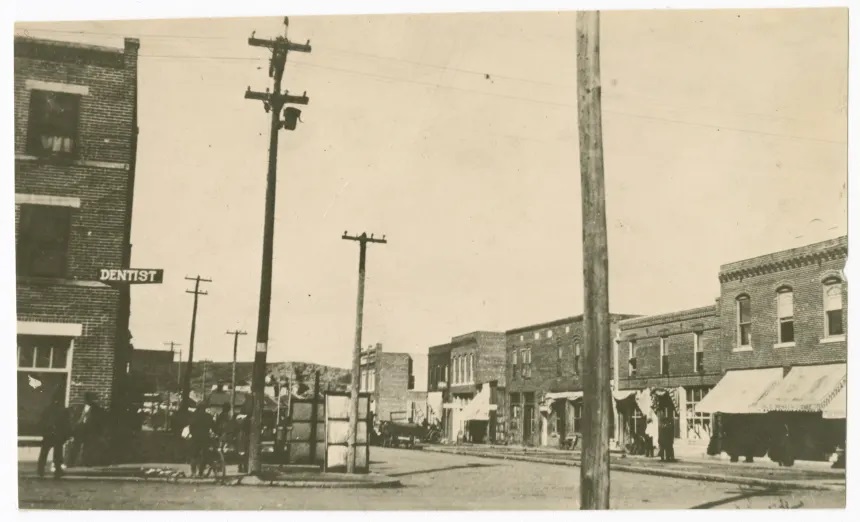


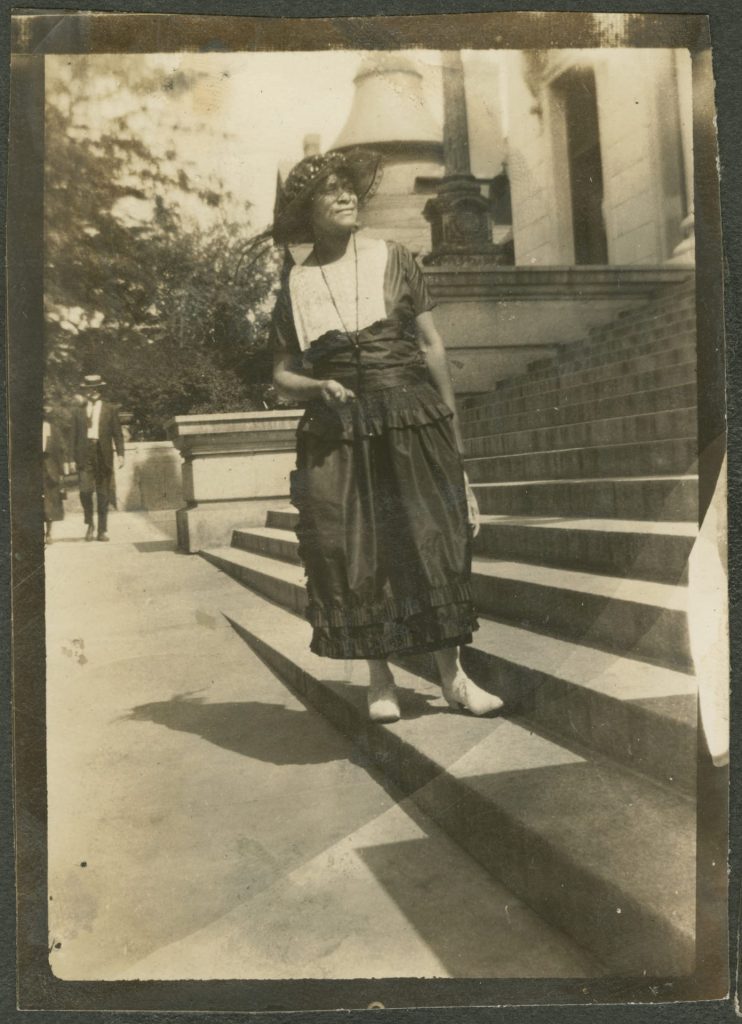



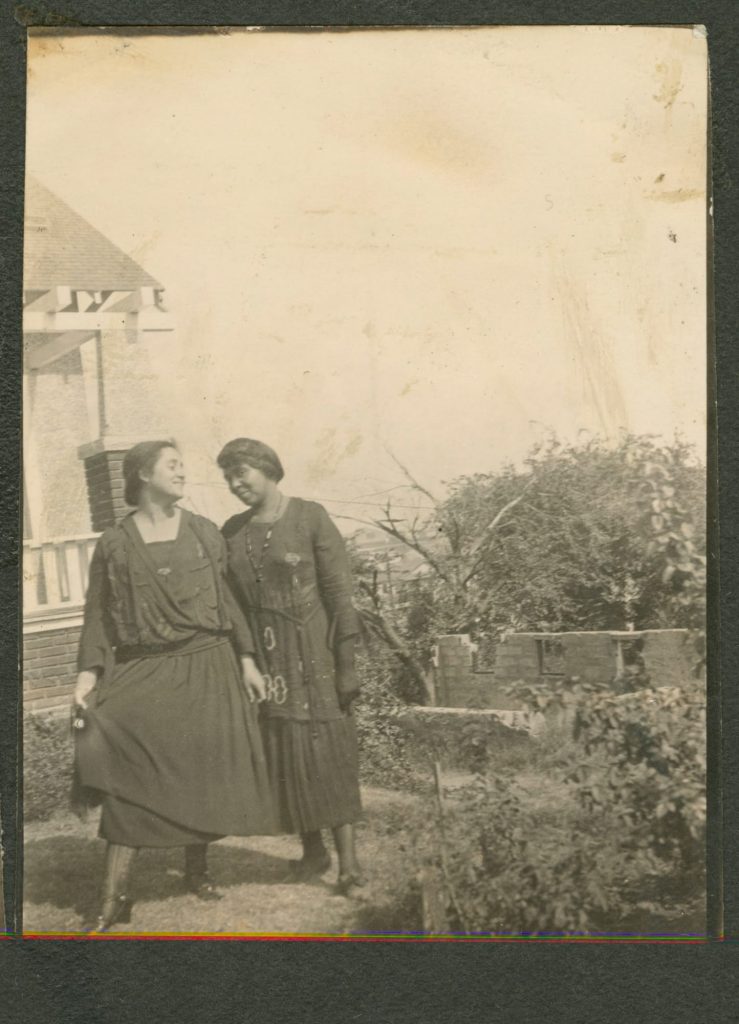




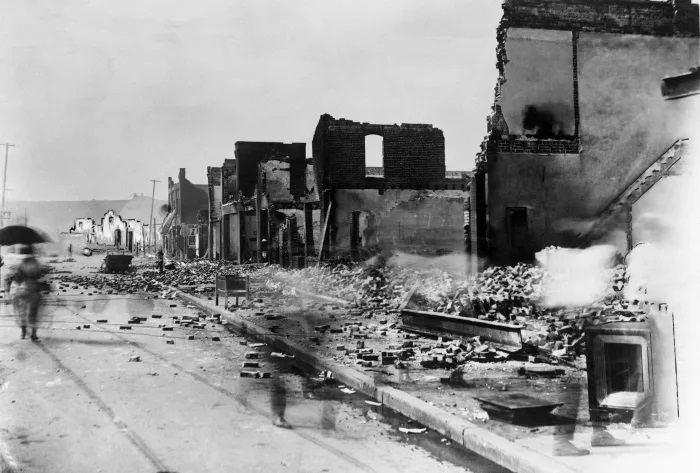


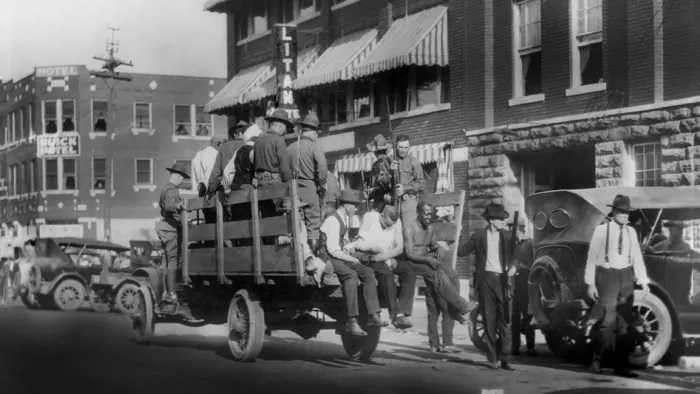
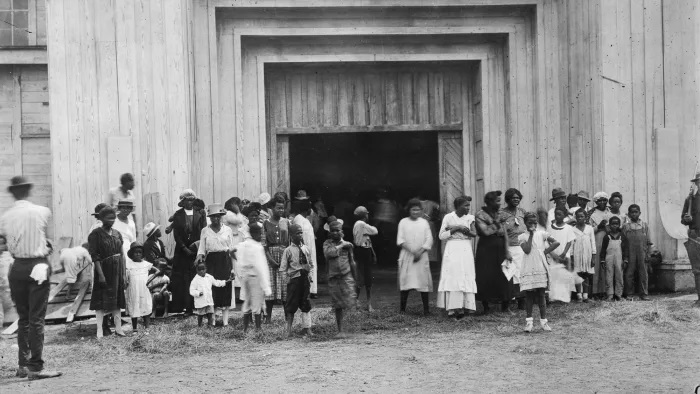

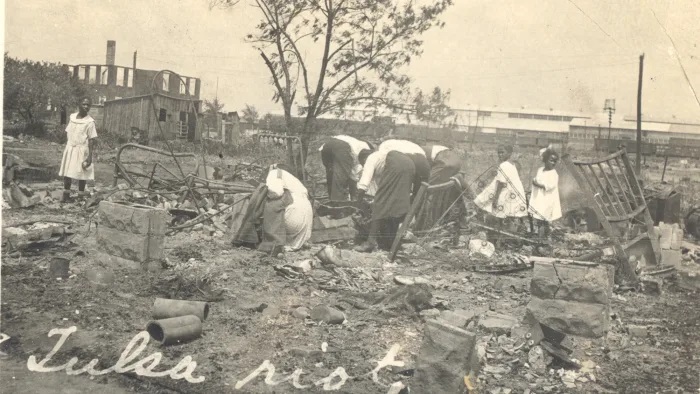
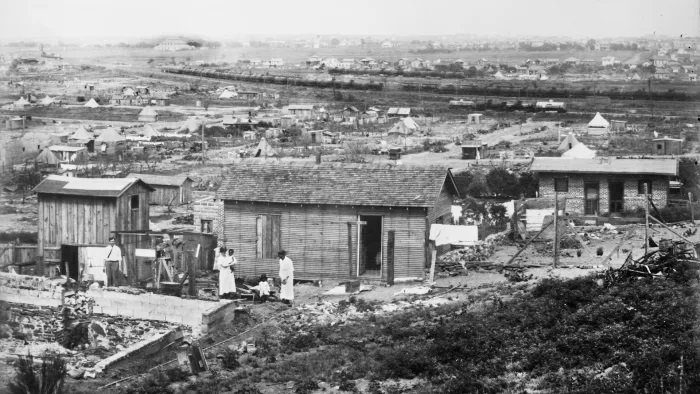
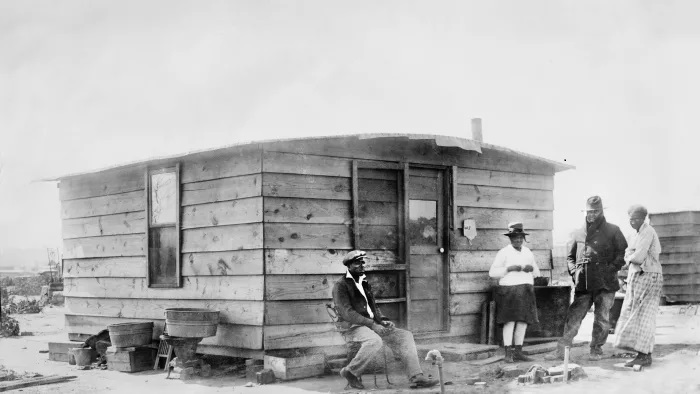
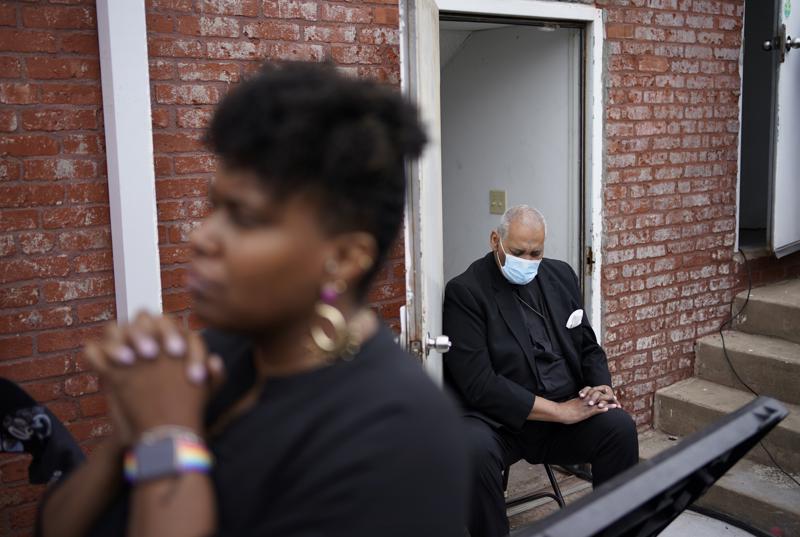
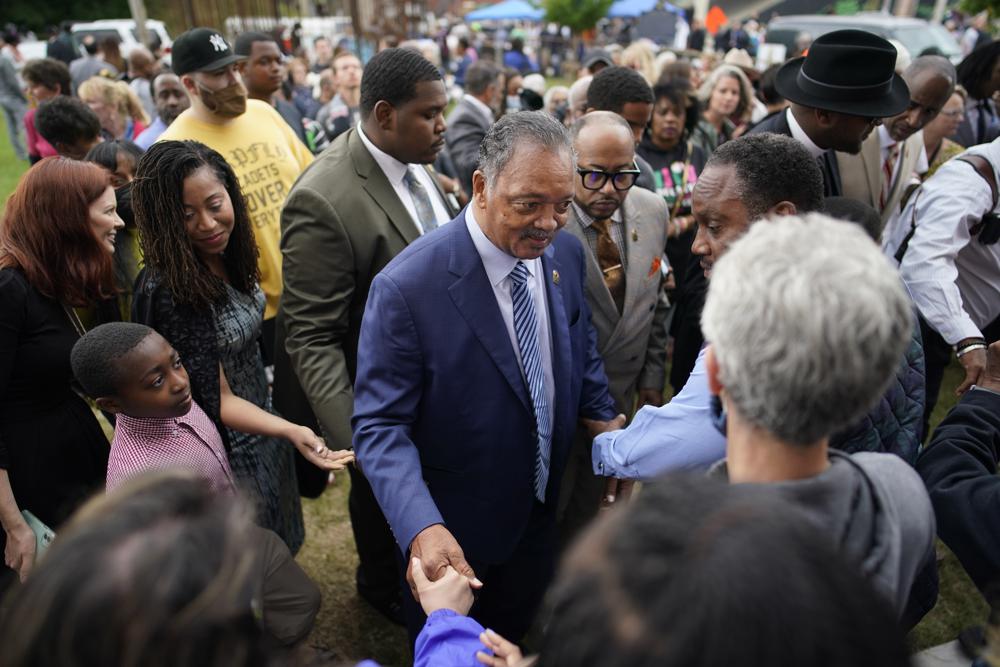

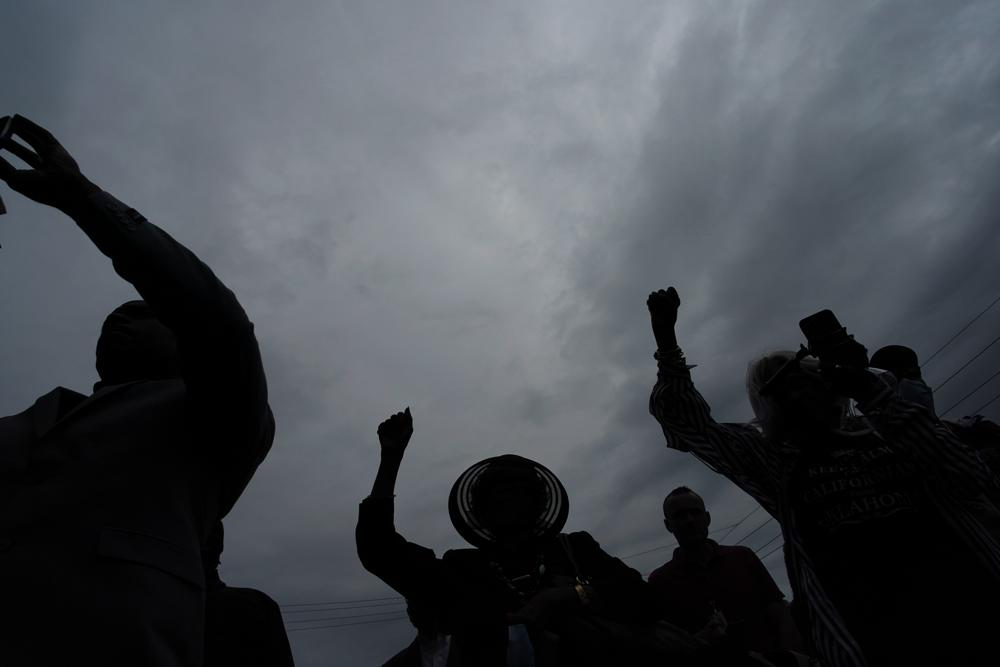
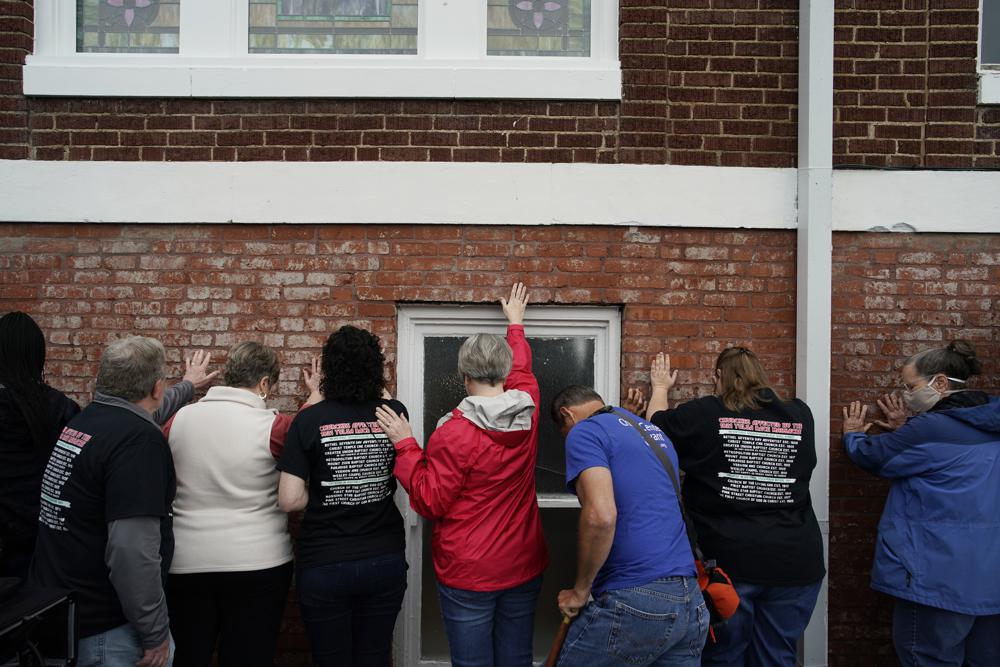

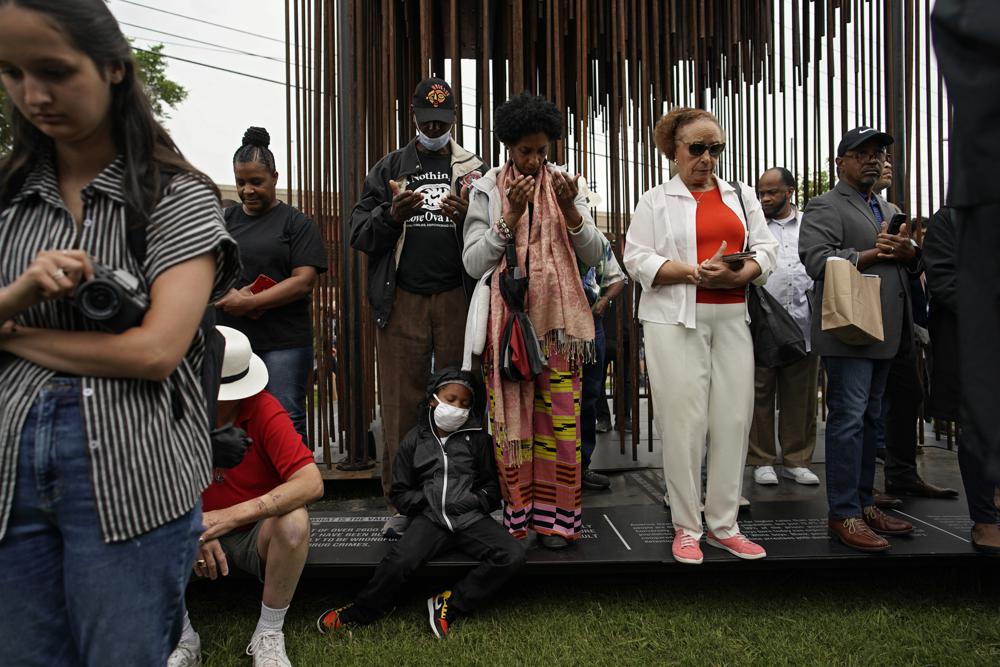

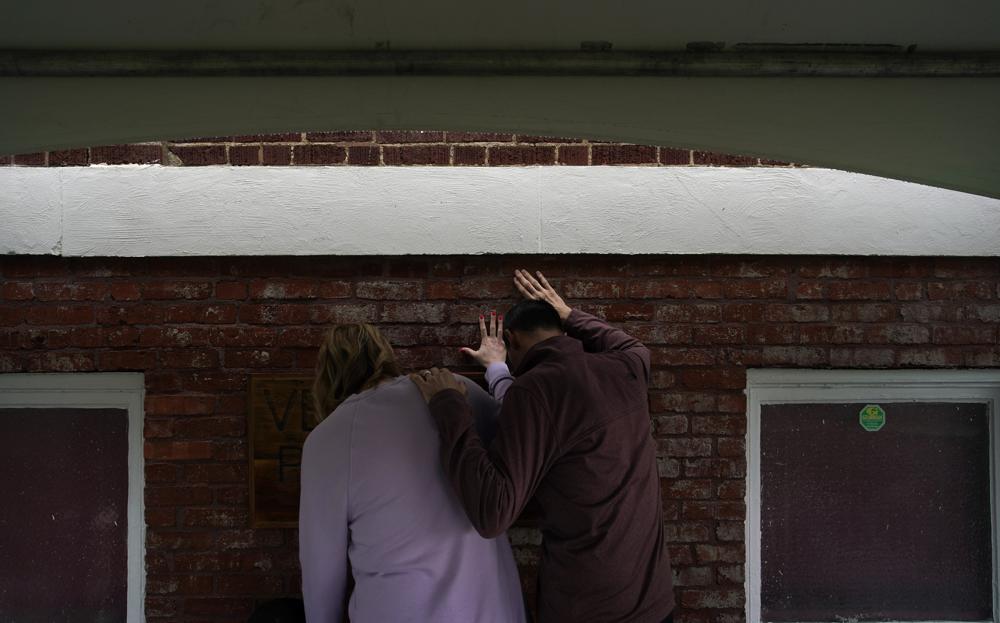
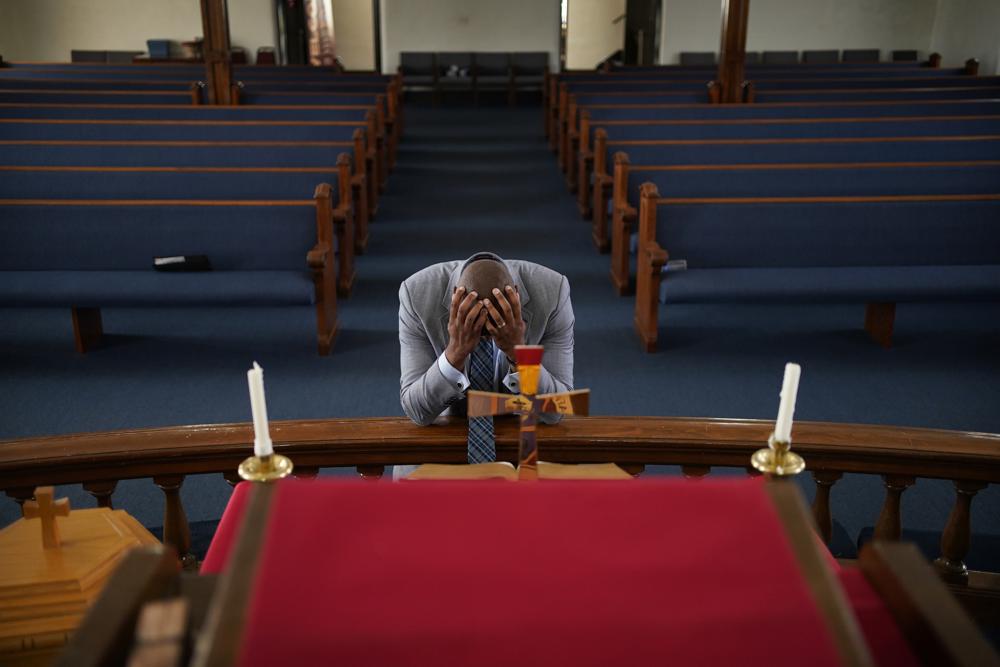


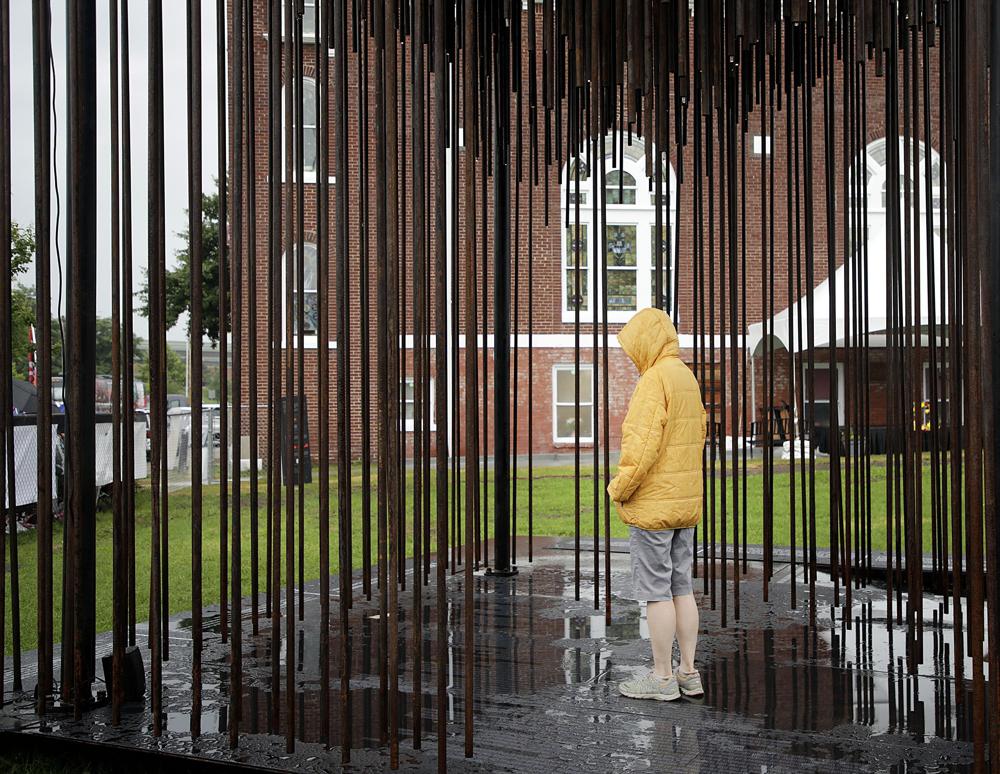



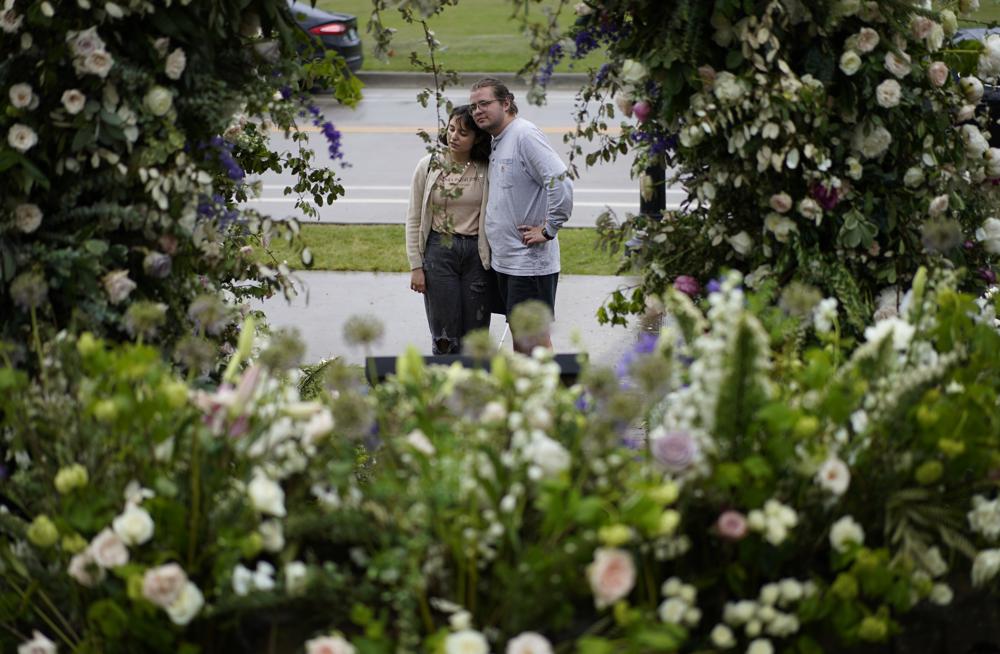
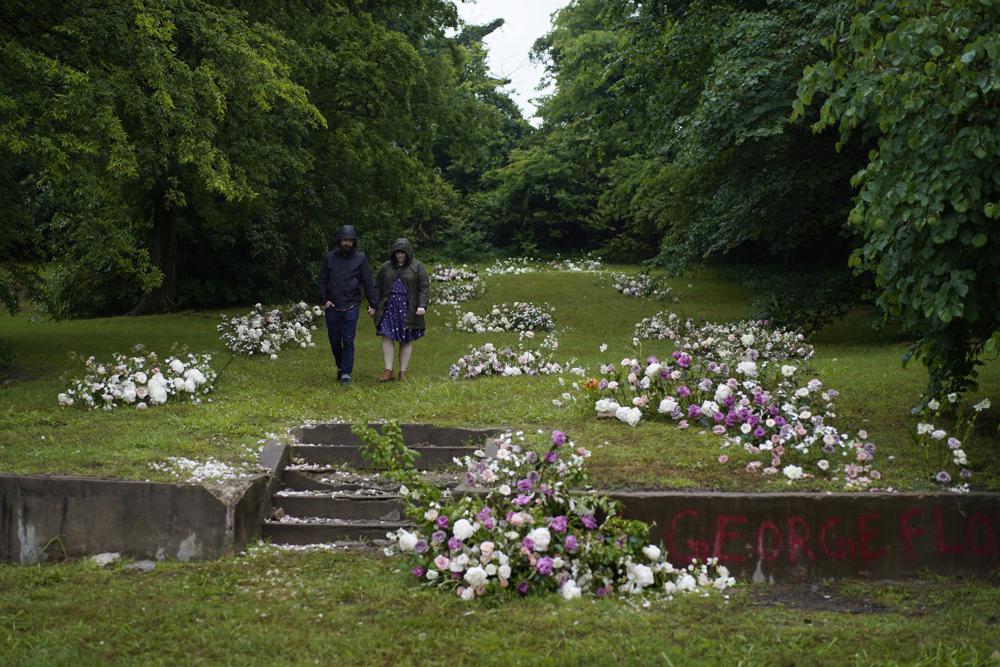

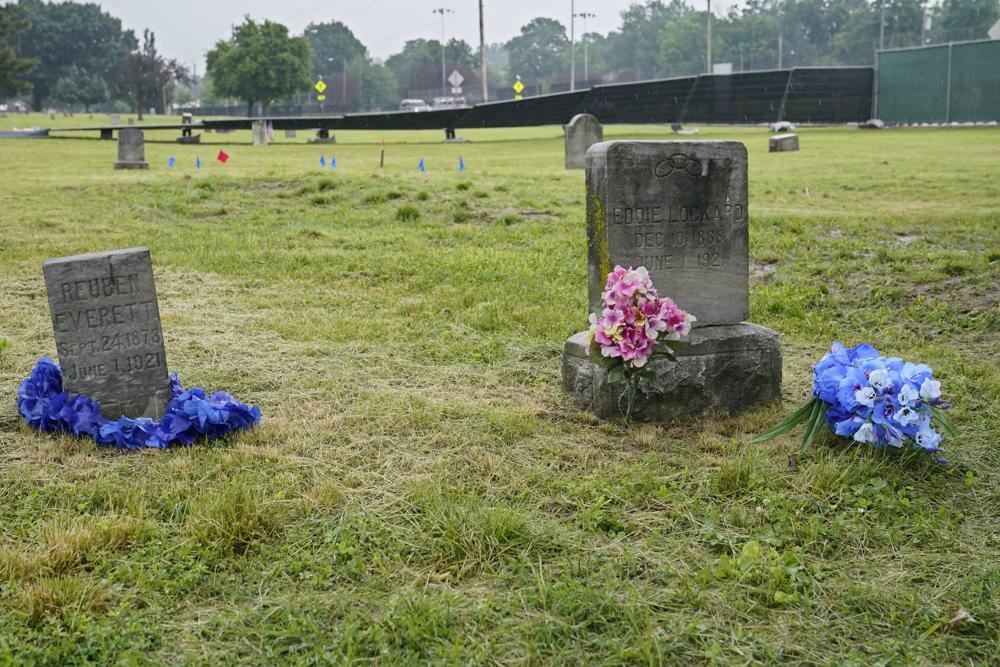
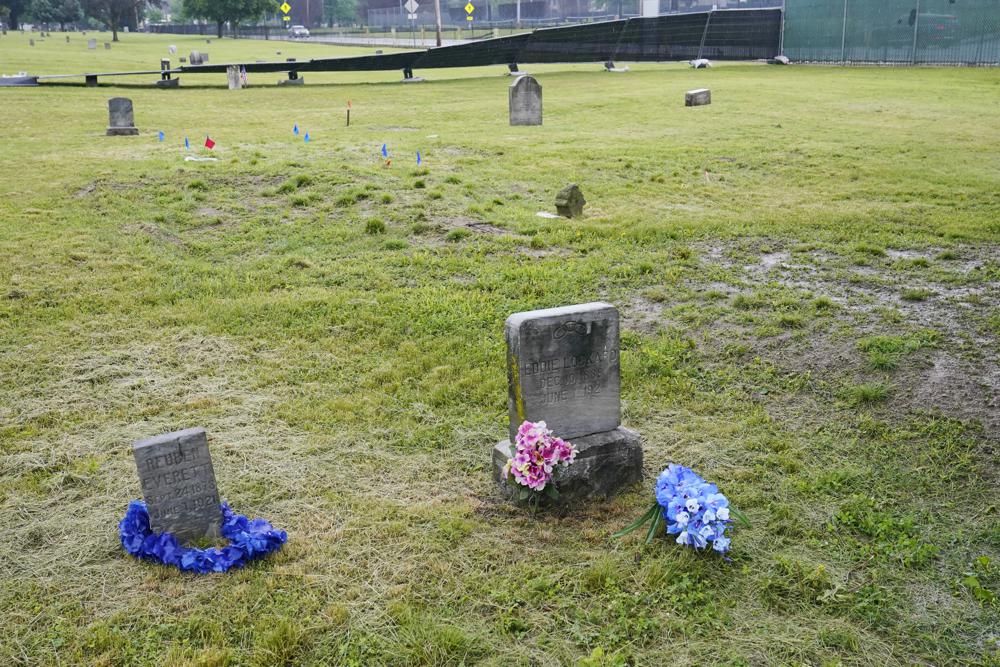
Leave a Reply